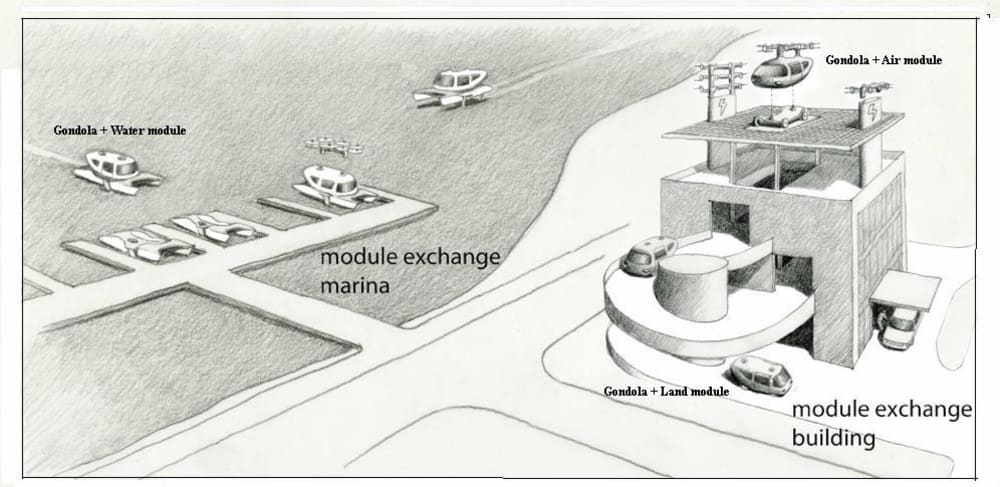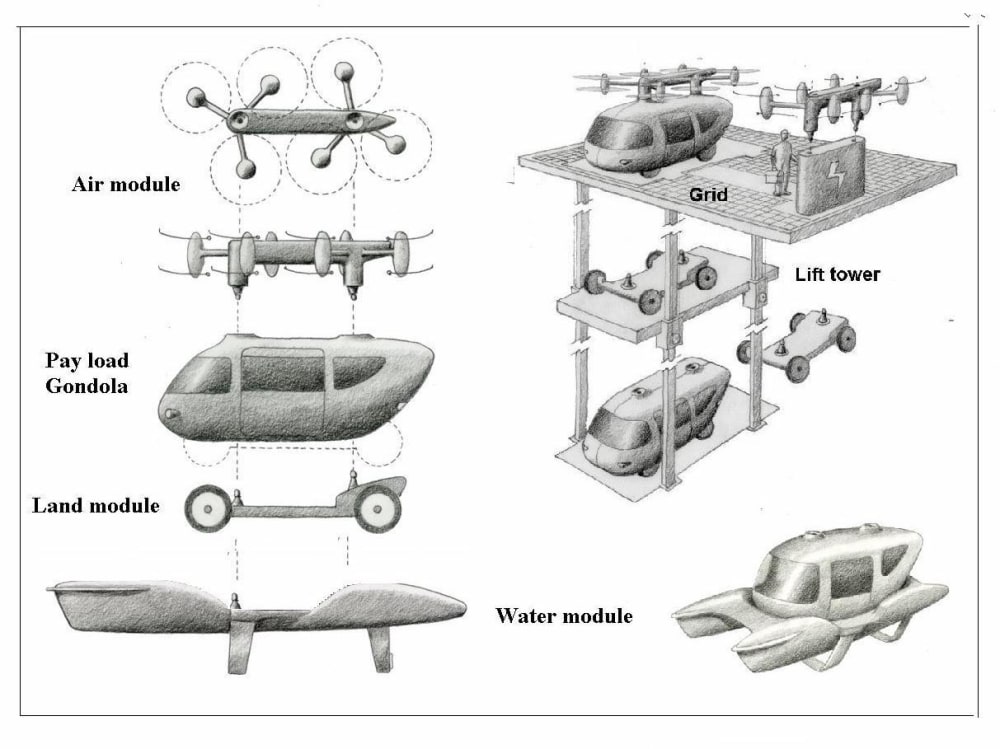The proposed urban mobility system will be composed of:
- Air modules: Multicopters having propulsion pods each one with one or two electric motors driving a single or multibladed rotors, equipped with battery or fuel cell power packs, and control unities capable of flying in autonomous, programmable, or fly by wire control modes.
- Land modules: Multi wheeled chassis with electric or hybrid propulsion system, having central or inside wheels electric motors, equipped with battery or fuel cell power packs, and control unities capable of driving in road and streets, in autonomous, programmable, or in drive by wire control modes.
- Water modules: Single or multi hulled boats (having or not hydrofoils) having electric motor driven propellers or hydro jet propulsion units, equipped with battery and or fuel cell powerpacks, and control unities capable of operating in river, lakes, coastal waters, and lagoons, in autonomous, programmable, or in drive by wire control modes.
- Payload gondolas: Aerodynamic shaped enclosures having doors, windows, seats, and or cargo spaces, upper attachments for the flying modules, lower attachments for the land modules or water modules, and equipped with electric drive by wire controls and instruments.
- Module exchange buildings with land and air modules parking areas, a lift to transport up and down full loaded pay load gondolas to and from a ventilated top floor landing area that minimizes the noise, and air downwash effects, in order to comply with the local allowed ambient requirements.
- Module exchange marinas having mooring areas for the water modules.
The assembled system resultant vehicles will be light and energy efficient since they will move in air, land, or water carrying only what is necessary for each transport mode.
This system's main advantages in comparison to the use of helicopters, cars, and boats are comfort and time saving, since there is no need to transfer people or merchandise from one to another modal, also allowing the choice of the fastest possible route through air, land and water. The negative side is the need to have fixed transition points, but that can be used as parking lots, and as battery charging and or fuel tank filling points.
This system fulfills the present worldwide demand for new transport designs alternatives, while reducing ambient noise and pollution issues and energy use, being ideal for water bounded cities like Venice, Amsterdam, Chicago, Melbourne, Paris, London, New York, etc.
The two drawings below give an example of one the system possible configurations showing:
A module exchange tower building, and a nearby module exchange marina.
Payload gondolas made of composite material.
Hexa-copter flying modules with twelve electric motors driving light and low stopped footprint high efficiency single bladed rotors, mounted in six pods linked to a central beam carryingcarrying the module controls and power pack.
A four-wheeled land module with inside wheels electrical motors and a box chassis carrying the module controls and power pack.
An electric water jet propelled, double hydro foiled catamaran water module carrying the module controls and power pack.
Like this entry?
-
About the Entrant
- Name:Francisco Leme Galvao
- Type of entry:teamTeam members:Francisco Leme Galvão
Roberto (Neco) Stickel - Software used for this entry:MGI PhotoSuiteSE, MS Word, Adobe Photoshop
- Patent status:none





